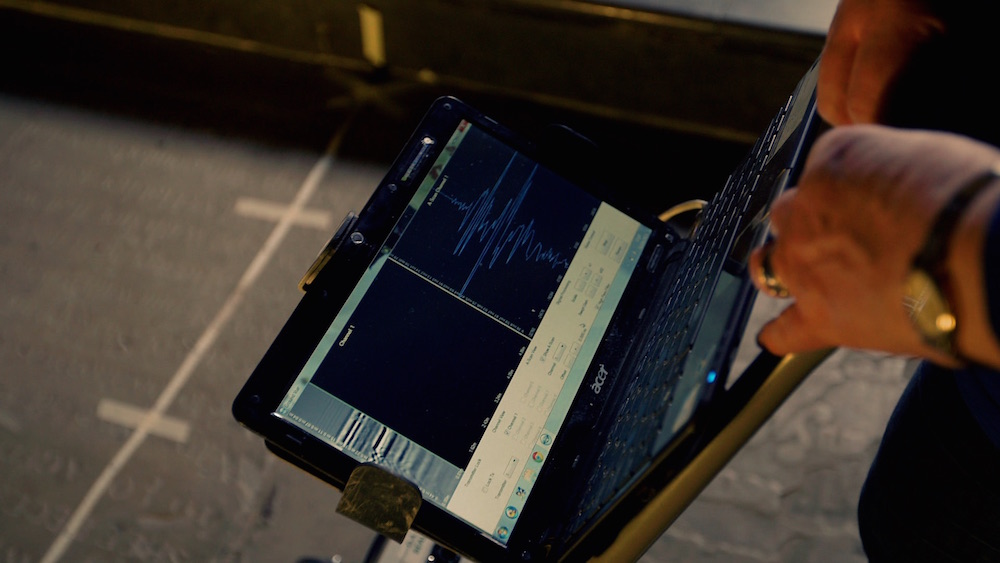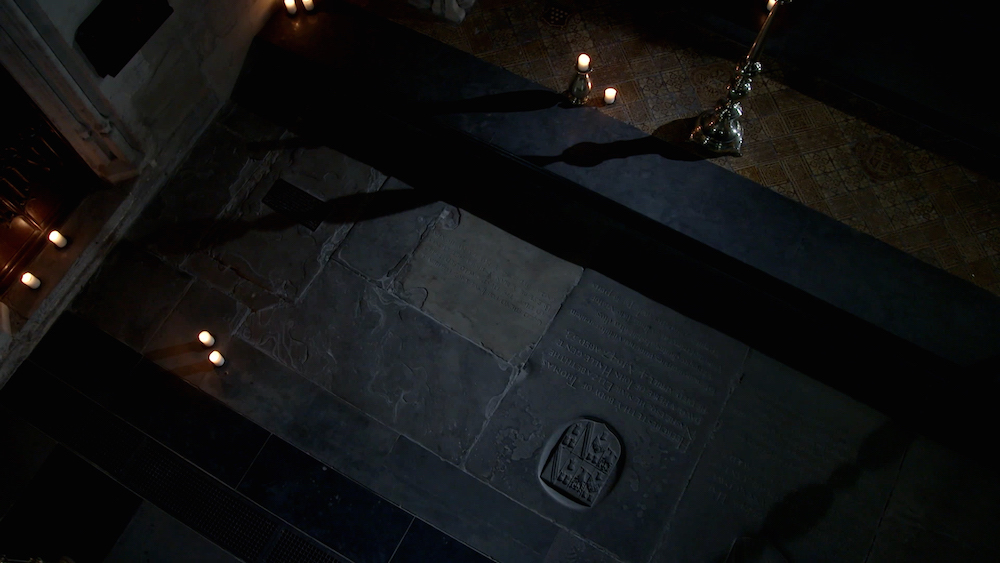Headless Bard? Shakespeare's Skull Pilfered by Grave Robbers

William Shakespeare — arguably the greatest playwright of all time — is missing his head, scientists have discovered.
Archaeologists recently scanned the famed writer's grave with ground-penetrating radar. They found that the bard's skull was missing and that he isn't buried in a coffin. Instead, Shakespeare's body is wrapped in cloth and buried inside a shallow grave less than 3 feet (1 meter) deep, the researchers said.
"Now, we all have a much greater understanding of what lies beneath his gravestone," said Kevin Colls, an archaeological project manager at Staffordshire University in the United Kingdom. [8 Grisly Archaeological Discoveries]
Shakespeare died in 1616, and his grave in Holy Trinity Church in Stratford-upon-Avon, England, continues to draw crowds. It also attracts researchers — one anthropologist, for instance, wants to study Shakespeare's bones to determine whether the poet smoked pot — but no one has officially been allowed to open up the grave.
But these rules didn't stop grave robbers. According to one tale, grave robbers, led by a certain Dr. Frank Chambers, broke into Shakespeare's grave in 1794. The account was later published in an 1879 story, which noted that Chambers sold the famous skull for 300 British pounds, or 39,000 British pounds (about $56,000) in today's money, Colls said.
But until now, there was little evidence to determine whether the tale was true, he said.
One day in 2010, Colls found himself talking with the former vicar of Holy Trinity Church. Colls was doing an archaeological project at Shakespeare's last home, and they got to "chatting about the fact that no one had ever been allowed to investigate his grave using archaeology," Colls told Live Science in an email.
Get the world’s most fascinating discoveries delivered straight to your inbox.
Intrigued, Colls asked whether he could use radar — a nonintrusive technique — to study the grave's contents. The church agreed.
"There are so many myths and legends associated with [Shakespeare's] burial," Colls said. "Some suggest he was buried 17 feet [5.2 m] down. Others say he was buried in a family crypt with the rest of his relatives. [The] truth is that no one knew which, if any, were right."
Shakespeare's grave
Colls and his colleagues used ground-penetrating radar to scan the famed grave. This technique works by pulsing radio waves through the ground. These waves are reflected back to a receiver as they bounce off buried material and objects, he said.
"Each different material in the ground reflects these waves back differently, which means we can map these changes to visualize what is under the ground," Colls said.
They scanned the bard's grave and the graves of four family members buried next to him, including his wife, Anne Hathaway. Despite rumors that Shakespeare's grave was empty, they found a body — hopefully, Shakespeare's — buried under his gravestone. [Top 10 Weird Ways We Deal with the Dead]
Interestingly, the western side of the grave, where Shakespeare's head would have rested, was disturbed, and a "boxlike structure was present, cutting through his grave to possibly repair the floor in that area," Colls said. In addition, the story about Dr. Chambers mentions that the grave robbers dug to a depth that matches the newfound measurements of Shakespeare's grave, Colls said.
"The area of disturbance was a surprise, as all of the tales of grave robbing of his tomb had always been dismissed as fiction," Colls said.
"Secret History: Shakespeare's Tomb," a TV documentary featuring the findings, aired this past Saturday (March 26) on British TV station Channel 4. The research team plans to publish the results in the journal Archaeological Prospection later this year and to write a book about it thereafter. In the meantime, they'll be searching for Shakespeare's skull.
"We believe that his skull is probably located somewhere else, and further research is required to figure out where that might be," Colls said.
Follow Laura Geggel on Twitter @LauraGeggel. Follow Live Science @livescience, Facebook & Google+. Original article on Live Science.

Laura is the managing editor at Live Science. She also runs the archaeology section and the Life's Little Mysteries series. Her work has appeared in The New York Times, Scholastic, Popular Science and Spectrum, a site on autism research. She has won multiple awards from the Society of Professional Journalists and the Washington Newspaper Publishers Association for her reporting at a weekly newspaper near Seattle. Laura holds a bachelor's degree in English literature and psychology from Washington University in St. Louis and a master's degree in science writing from NYU.




